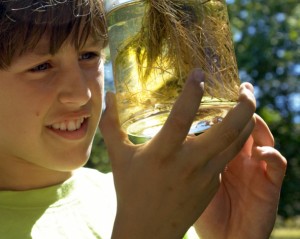Not a teacher. Not a fireman.
When he grows up, 8-year-old Jamir Green wants to be a scientist.
“It seems fun,” he said. “You can make chemicals and medicines.”
As a second-grader at George Washington Carver STEM Elementary School on Cleveland’s East Side, Green was inspired by Rob Isner, who has led the school’s 4-H Agri-science in the City program since it began in 2014.
In Cincinnati’s Over-the-Rhine neighborhood, Tony Staubach offers the same program at Rothenberg Preparatory Academy.
As 4-H staff members, Isner and Staubach integrate food- and farm-related science activities during school, in after-school programs, in 4-H clubs and at summer day camps.

Thanks to a new 4-H program, many students at George Washington Carver STEM Elementary School in Cleveland now say science is their favorite subject.
“When I started the program, most students said science was their least favorite subject,” Isner said. “Now, more than half say it is their favorite. They only have the agri-science program once a week, but we’re having an impact.”
- In Cincinnati, nearly 500 students participated from March 2014 through May 2015, when students who say they believe it is possible to farm in the city increased from 54 percent to 74 percent, and students indicating they want to work in food or farming increased from 15 percent to 31 percent.
- In Cleveland, nearly 600 students participated during the 2014–15 school year. At the end of the year, 83 percent gave the program an “A;” 67 percent said they wanted to learn more about agriculture the next year; and 42 percent said it was “very likely” they would attend a career tech program in agri-science in high school.
More: go.osu.edu/agrisci2015










